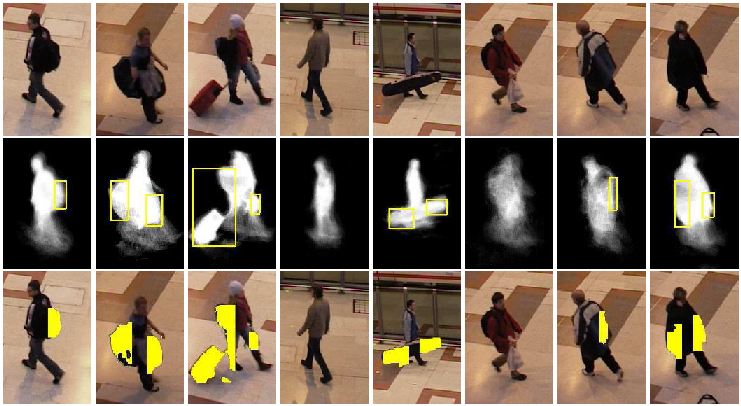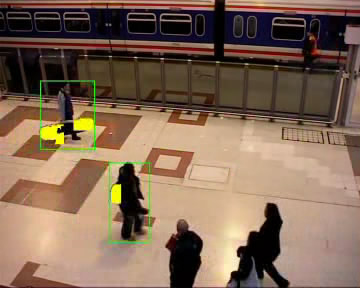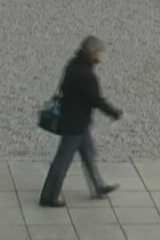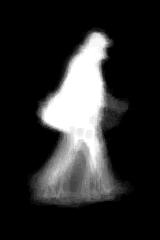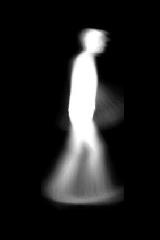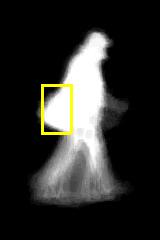Detecting Carried Objects in Short Video SequencesDima Damen, David HoggWe have developed a new method for detecting objects carried by people. It detects visible objects, larger than a few centimeters, carried by people walking in any direction in a scene that is not too crowded. It works by comparing tracked individuals with an idealised shape model of a pedestrian not carrying any objects. Protrusions beyond the expected silhouette are potential carried objects.
Software DownloadWhen using this code, kindly reference our TPAMI paper below.MATLAB code of the software is now available with details of how to use it - download (3.0MB) A short sequence from PETS2006 to test the code - download (3.9MB)
The Method
(b) The motion template obtained from background subtraction (c) Aligned motion template of a pedestrian walking in the same direction and carrying nothing (d) A map of the protrusions that might correspond to carried objects (e) Detected carried objects: The MAP solution for a Markov random field over this protrusion map, combining a prior on the location of carried objects with a spatial continuity assumption |
